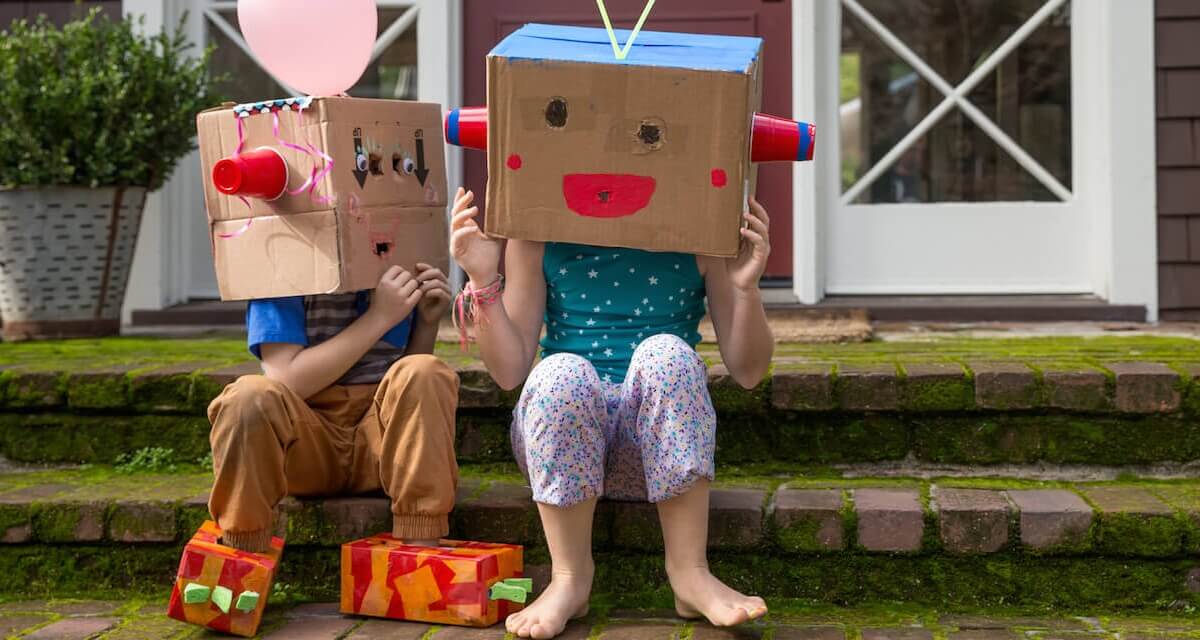Going the creative route is totally worth it, and it can be easy — even if you're not crafty.
- By
- Parker Barry
Valentine’s Day seems to arrive just in time to brighten the winter blahs. But deep into the doldrums of the school year, who really has the time or energy to help their kids create crafty handmade valentines? Buying pre-made cards for class parties and calling it good enough is quick and easy. No guilt there, since most kids like the familiar characters and candy associated with store-bought valentines.
Sure, those cards are often the most convenient option for busy families. But there are some compelling reasons why prioritizing time to be creative and crafty with our kids — for Valentine’s Day, or just any day — is as worthwhile as helping them with homework, reading to them or making sure they get enough physical exercise. Take a look:
- 1. Creative crafting boosts mental health. Recent research suggests that using our hands to make things can help protect against modern-day mental health issues like anxiety and depression. Engaging in creative projects consistently over time — knitting, drawing, woodworking, gardening or whatever arts and crafts capture your kid’s interest — promotes well-being in myriad ways.
- 2. It fills in the gap left by many schools. Resources allotted for the creative arts in U.S. schools continue to shrink. According to the U.S. Department of Education, the number of U.S. elementary schools that even have visual arts classes shrunk from 87 percent to 83 percent from 2002 to 2012, and some elementary schools that have art classes hire only part-time art teachers.
In a millions-time viewed TED talk, creativity expert and education advocate Sir Ken Robinson boldly asserts: “Creativity is as important in education as literacy.” Robinson believes we are educating kids out of their creative capacity at a time when the rapid changes in our world require the ability to be creative, adaptable thinkers.
- 3. Crafting develops the whole child. As far back as the 19th century, education reformers pushed for all children to be instructed in arts and hand-made crafts, arguing that it develops the “mental, moral and physical powers of children.” It’s easy to overlook how gluing paper lace to the back of cutout construction paper hearts can help a kid grow in personal power, but making something on one’s own can do just that.
- 4. Handmade gifts help kids learn the true spirit of giving. “It’s the thought that counts” when it comes to gifts, and handmade cards or crafted gifts almost always require more thought than their store-bought counterparts. When kids show special people in their lives an extra level of attention by making their card or gift, it adds a personal touch. Kids learn it’s not what they give that matters; it’s what they give of themselves within the gift that makes it special for the recipient.
- 5. It’s fun! By crafting something together, you’re quite literally making memories that can be stored in a keepsake box, scrapbook or box of cards. “Doing projects together is a great way to have a positive, connected family experience,” write Drs. Carrie and Alton Barron in “The Creativity Cure: How to Build Happiness with Your Own Two Hands.” “There is something uniquely fulfilling about your Creative Self in the company of those to whom you feel a strong bond.”
Make creative projects with kids doable
So how can busy families make time to be creative and craft together at least a few times each year, if not more?
- 1. Right size. For Valentine’s Day (or any other school-related or holiday event where you’re expected to bring something for each kid in class), keep things simple and small. If your kids really want to go big and elaborate, encourage them to spend more time on one or two cards or gifts for special people, like their teacher or grandparents.
- 2. Discuss options with your kid. Ask kids what they’d like to make, and then develop that idea to arrive at a manageable project within a reasonable time frame and cost for supplies.
- 3. Start early. Prep some of the craft’s steps ahead of time to set your kid up for success. Any tracing, cutting, hole-punching, etc. that isn’t doable for your kid at his or her current skill level can be completed by you ahead of time. Make each session the age-appropriate amount of time for your kid’s attention span. If necessary, spread the rest of the project’s steps over a few crafting sessions to keep it fun and pressure-free.
- 4. Create in the kitchen. If your kid enjoys baking more than crafting, consider making a decorated food gift or craft, such as cutout cookies or themed cupcakes. Food most certainly can be crafty!
- 5. Expect imperfection. Crafts with kids are as much about the process as the product. Once you’ve set up the project for success as much as possible, try to be hands-off with the details.
- 6. Block time. Schedule regular time to be creative together as specifically as you do time for sports practices or family movie nights. Whether it’s weekly, monthly or one afternoon during your family’s favorite holidays, being creative together is worth blocking the time to make sure it happens.
- 7. Make space for mess and supplies. Make setup and cleanup easy by having a designated “messes-allowed” craft table (or oil cloth to put under and on top of a kitchen table) to use when crafting. Keep some essential supplies on hand so you don’t have to start over with each new project.
- 8. Find kid-friendly resources for proven creative craft ideas. Here are a few suggestions; find others at your local library:
- Hand-in-Hand: Crafting with Kids, by Jenny Doh
- Side by Side: 20 Collaborative Projects for Crafting with Your Kids, by Tsia Carson
- The Creative Family: How to encourage imagination and nurture family connections, by Amanda Blake Soule.


